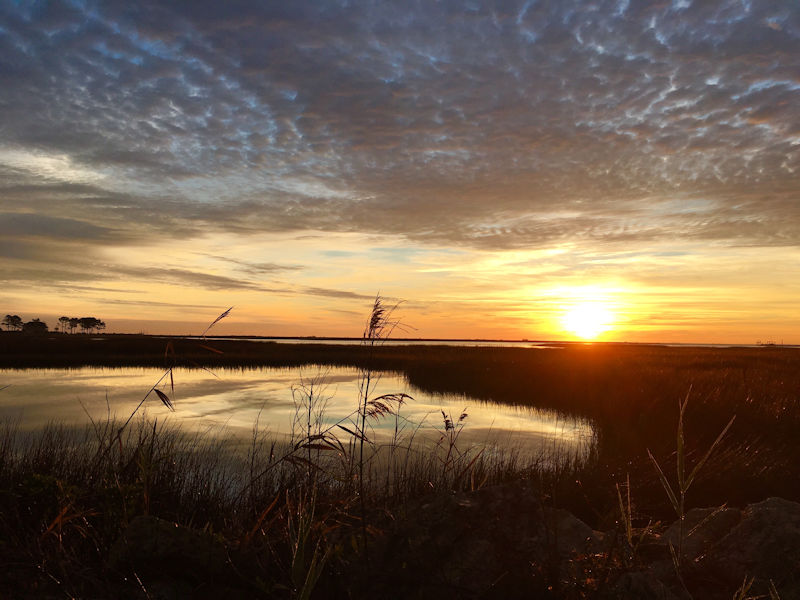Have you heard about the devastating effects the invasive species Nutria has on the Chesapeake Bay ecosystem?
Nutria was brought over from South America as a potential replacement for the Rockefeller-sponsored fur trade in the 1930s.
However, when the fur market fell due to ongoing economic and financial crises, the Nutria had already established a solid foothold here in Maryland and on the East Coast of the United States–and they have been wreaking havoc ever since.
Nutria Impact on the Chesapeake Bay
The Chesapeake Bay ecosystem is a unique and delicate network of interconnected habitats that support a wide variety of plant and animal species. Unfortunately, Nutria poses a significant threat to this fragile ecosystem. These rodent invaders have a voracious appetite for vegetation, particularly the roots and stems of wetland plants.
With their sharp incisors, Nutria can quickly decimate large areas of marsh vegetation. This indiscriminate feeding behavior not only destroys plants but also disturbs the delicate balance of the ecosystem. Wetlands, which serve as critical nurseries and habitats for numerous fish and bird species, are gradually transformed into barren areas.
As nutria feed on the roots of marsh plants, they destabilize the soil, leading to erosion and land loss. This erosion not only affects the structure of wetlands but also compromises the water quality of the bay. Nutria movement through the marshes causes sediments to become suspended in the water, increasing turbidity and reducing light penetration. Consequently, submerged aquatic vegetation, which plays a vital role in oxygen production and serves as a refuge for marine organisms, is negatively impacted.
Trapping as an Effective Method for Solving the Nutria Challenge
Trapping has proven to be one of the most effective methods for reducing nutria populations and mitigating their impact on the Chesapeake Bay ecosystem. Effective trapping method used to capture Nutria. These devices are set up in areas where Nutria are known to frequent, such as along the edges of marshes or near their burrows.
Damage to Wetland Vegetation
Trapping not only helps control nutria populations but also minimizes damage to wetland vegetation. By removing Nutria from the ecosystem, the regeneration of native plants can occur, providing habitat and food sources for a variety of other species. Restoring wetland vegetation also helps stabilize the soil, mitigating erosion and the subsequent loss of land.
Additionally, trapping plays a crucial role in controlling the spread of nutria-related diseases. These rodents are known carriers of parasites, including the rat lung worm parasite, which can harm humans and animals. By reducing nutria populations, the risk of disease transmission can be significantly minimized.
The Benefits of Nutria Trapping
Trapping Nutria not only aids in restoring the Chesapeake Bay ecosystem but also provides additional benefits. One of the most significant advantages is the protection of native species. Nutria, as an invasive species, out compete native animals for essential resources such as food and habitat. By trapping and removing Nutria, space is created for native species to flourish and reclaim their natural habitats.
From an economic perspective, nutria populations have a detrimental impact on industries such as aquaculture and tourism. Nutria’s destructive feeding behavior and negative influence on water quality have a direct effect on the profitability of aquaculture farms that rely on healthy bay waters.
Save Our Eco-system From Destructive Invasive Rodents
Nutria poses a significant threat to the delicate ecological balance of the Chesapeake Bay. Their destructive feeding habits and contribution to water pollution have far-reaching consequences for the bay’s flora, fauna, and overall health. However, trapping offers a practical and effective solution for mitigating the impact of Nutria on the bay’s ecosystem.
Through trapping techniques, nutria populations can be controlled, allowing for the restoration of wetland vegetation and improved water quality. The benefits of Nutria trapping extend beyond ecological restoration, encompassing the protection of native species, the promotion of sustainable industries, and preserving a beloved natural resource.
Suppose you are concerned about the health and well-being of the Chesapeake Bay. In that case, we encourage you to support Nutria’s trapping efforts and spread awareness about the devastating effects of these destructive rodents.
Visit our website to learn more about nutria eradication efforts in the Chesapeake Bay and how you can contribute to preserving this precious natural wonder.

